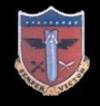|
 As
I rode south from Lincoln, Nebraska, I thought back events
before. College cadet training in Cleveland, Ohio had
been super. I had been sixty miles from home for those
six months. But my dream of becoming a pilot had been
dashed when the Air Force suddenly decided it had all
the cadets it needed and closed the program down. It was
off to Tyndall Field, Florida for aerial gunnery training.
Though somewhat disappointed, at least I was still flying.
Now I was on my way to an unknown B-29 base for crew training.
I wondered about the guys I would be crewed with. I would
have to wait and see what my lot would hold.
As
I rode south from Lincoln, Nebraska, I thought back events
before. College cadet training in Cleveland, Ohio had
been super. I had been sixty miles from home for those
six months. But my dream of becoming a pilot had been
dashed when the Air Force suddenly decided it had all
the cadets it needed and closed the program down. It was
off to Tyndall Field, Florida for aerial gunnery training.
Though somewhat disappointed, at least I was still flying.
Now I was on my way to an unknown B-29 base for crew training.
I wondered about the guys I would be crewed with. I would
have to wait and see what my lot would hold.
Pyote,
Texas, population insignificant; was home for the "Rattlesnake
Bomber Base." At last we got to see the new big revolutionary
bomber we had heard so much about. Though it was limited
in numbers, we were impressed at its sleekness, size and
overall beauty.
It wasn't long before our crew was formed. Henry Snow,
Jr., Baltimore, Maryland, would be our airplane commander.
Sam LaNever co-pilot was from Los Angeles, California.
They were a "Mutt and Jeff" combination - Hank being 5'
6" and Sam a towering 6'6". Our bombardier was a Brooklyn
Boy - Bernie Greene and Jim Webb from Elwood, Kansas would
be our navigator. Lt John Hill would replace our initial
radar man Freeman Teague in a couple weeks. P-31's flight
engineer, Clarence "Bully" Beevers came from Cleveland,
Mississippi. "Bully" was the oldest man on the crew both
in age and in service time. A professional gambler, he
would soon become the catalyst that would bind us all
together as a combat crew. Radio man, Dick Wachs was from
Misawauka, Indiana and was married. His wife, Dottie in
our hearts became the twelfth member of the crew. Rounding
out P-31's crew were the gunners - Edgar Tuttle from Boise,
Idaho, CFC; Jack Tate, Birmingham, Alabama, Robert Stott,
Dupo Illinois blister gunners and me, tail gunner, from
Jefferson, Ohio.
Six
months later we picked up our B-29 at Herington following
a furlough home. The A/C had a problem at home. Beevers
and LaNeve got married and was the butt of jokes and many
ribbings. The name of our plane "Little Bully" would grow
out of shotgun marriage jokes with Beevers.
It
was on to Mather Field, Sacramento, California, and our
embarkation point for overseas. It was there that we learned
of the death of President Roosevelt. After stops at Hickam
in Hawaii and Kwajelein Atoll in the Marshalls, we arrived
at Saipan in the Marianas. There at Isley-Field the 73rd
Bomb wing confiscated our airplane and whisked us off
at Military Air Transport (MAT) to Guam, our final destination
and our overseas home, the 39th Bomb Group. The date was
April 20.
Temporarily,
we were without an assigned plane and would have to share
aircraft with other crews in the same situation. Snow,
Webb and Beevers would fly their orientation missions
with three other crews - Hank with Lt. Pullev's P-4; Webb
with Lt. Styron on P-22, and Beevers went alone with Capt.
Orionchek's P-26. Over the target Orionchek's aircraft
was rammed by a Jap fighter and was forced to ditch off
the coast of Japan, Hank Snow witnessed their ditching
and saw them all getting Into life rafts, then reported
their position to air-sea rescue. Three days later the
entire crew had disappeared! Tragedy struck our crew before
we had flown our first mission ! We prayed for "Bully"
and the others each night in our quonset.
Wachs
flew his first mission with Lt. Heimlich's crew, P-37.
We were alerted for our first mission, as a crew, on 10
May. In a borrowed aircraft, "Four Aces," and with a loaned
flight engineer, Chic Scheider, we took off for our first
bombing raid against Japan. Chic would fly with us on
a number of future flights. The take-off that night was
made more frightening after viewing a huge sea of flames
at the base of the cliff directly, at the end of the runway.
Taking off ahead of us, another B-29 had crashed. Ironically,
like us, this was their first mission.
Just
north of Iwo Jima, we pulled the pins on our bomb load
then pointed our nose toward the assembly area. We used
the intervening time to check our gun turrets, intercom,
etc, and to insure that all of our equipment was in position.
After making formation, we started inland toward the black
puffs of flak bursts ahead. Suddenly, the rain of exploding
anti-aircraft shells could be heard rattling against the
skin of "Four Aces." Little holes were appearing here
and there along the wings and fuselage. One shell struck
number two engine requiring A/C Snow to cut power and
feather it. Losing air speed, we limped on toward our
bomb-run through the increasing flak and over forty-five
fighter attacks.
|





